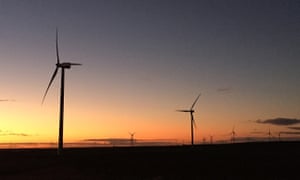As countries and companies work towards ambitious 2030 emissions targets, poor investments today will soon be exposed
We
are experiencing a human tragedy. The Covid-19 crisis is leading to
human loss and suffering, hardship and job destruction. It has
necessitated immediate and significant public health and economic global
responses, affecting all of us, both now and for the foreseeable
future.
But with the economic recovery comes great opportunity to embrace a low carbon future and refocus on the green economy rather than stick to 20th century business models and infrastructure.
A modernised economy with a more sustainable production system is in our sights.
Governments need fiscal policies that achieve both short-term
recovery and set a longer-term beneficial direction for the economy.But with the economic recovery comes great opportunity to embrace a low carbon future and refocus on the green economy rather than stick to 20th century business models and infrastructure.
A modernised economy with a more sustainable production system is in our sights.
As attention shifts to reflating economies it is time to ensure clean energy, transport and smart infrastructure lie at the heart of any longer-term stimuli. A key feature of our current crisis is that all sectors have been disrupted and some devastated. But now, in the very midst of lockdown, we must turn our attention from response to recovery. An unprecedented scale of government recovery measures are already upon us. With the scale of these interventions, Covid-19 is fast bringing our economy to an inflection point – one that will define the structure of our economy for decades and rebuilds the lucky country.
With the global shift towards low-carbon by investors, corporates and citizens, decarbonisation is perhaps the most significant longer-term issue to be factored into the recovery. Failure of governments to do so may disadvantage economies with existing infrastructure and production capital becoming quickly outdated and requiring additional future upgrades. It may also lead to bailing out, or letting fail, businesses whose value rapidly diminishes due to being unviable in the low-carbon future – a future that is not so far away as countries and companies work towards ambitious 2030 emissions targets. Poor investments today would soon be exposed.
"In the very midst of lockdown, we must turn our attention from response to recovery"
Recovery and building resilience go hand in hand. Resilience to climate change will continue to be an objective in a post-Covid future. Building for climate risks is building economic resilience, and recovery plans, so targeted, mean taxpayer dollars will have been invested wisely.
With a recovery design that considers decarbonisation, there are a multitude of job-rich, shovel-ready, stimulus opportunities that also unlock long-term value. Many of these projects are “negative cost”, in that their long-term financial benefits outweigh their upfront investment. Lighting upgrade programs across all government buildings would create metro and regional employment with positive domestic stimulatory impact, while also delivering long-term savings for taxpayers through reduced electricity bills. Similarly, a program to upgrade inefficient water heating systems across the residential sector would address and reduce the second largest component of electricity bills for households.
The landscape and cost competitiveness of clean technologies today is vastly different from when the global financial crisis recovery packages were designed. At that time, solar was one of the most expensive ways to generate a unit of electricity. Today it is the cheapest. Electric vehicles have advanced along their learning curve and, in the next few years, will reach price parity. In reassessing technology competitiveness, investment in electric vehicle infrastructure could build long-term resilience into our towns and cities and help improve local air quality in the process.
Similarly, the accelerated opening up of renewable energy zones – areas with high wind or solar resource potential with coordinated strategic transmission planning to enable connection of multiple generation projects – will enable higher penetrations of low-cost renewable energy and reduce operating costs for business. By accelerating investment, we can build efficiencies into our economy earlier than would have other been possible.
Addressing the structural issues that hold back higher penetrations of renewables into grids presents opportunities to think about interconnections, storage, smart charging and enabling demand response to compete in the flexibility markets.
As proposals for fiscal stimulus are further developed, their assessment and prioritisation by government will be key to achieving both the desired domestic stimulatory impact and the long-term economic direction setting and benefits. Five key criteria can be used to assess proposals – the ability to deploy spending quickly; the creation of jobs and use of under-utilised resources; the domestic fiscal multiplier; the delivery of long-term returns for the economy; and the building of an economy that is future-focused on building resilience and sustainability. Only by ensuring the last point is included as part of the assessment will we be able to lay strong foundations on which our economy will thrive.
Today we must all respond to Covid-19 but we must also plan to recover. If done with vision, it will present the opportunity for us to also thrive – an opportunity to rebuild towards a more sustainable future we can all be hopeful for.
• Dr Pradeep Philip is the lead partner for Deloitte Access Economics. Will Rayward-Smith is a director specialising in decarbonisation and the clean energy transition

No comments:
Post a Comment